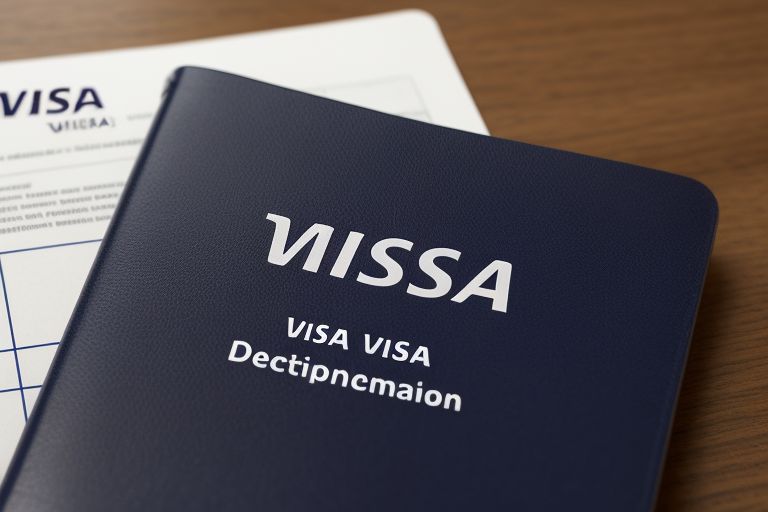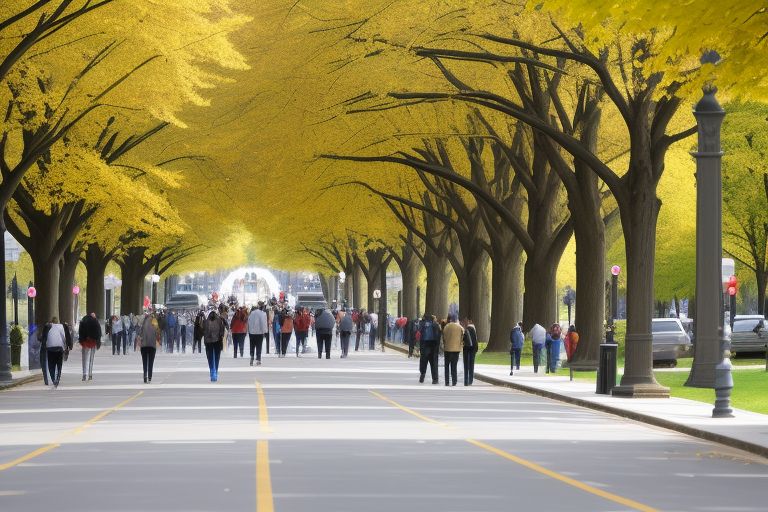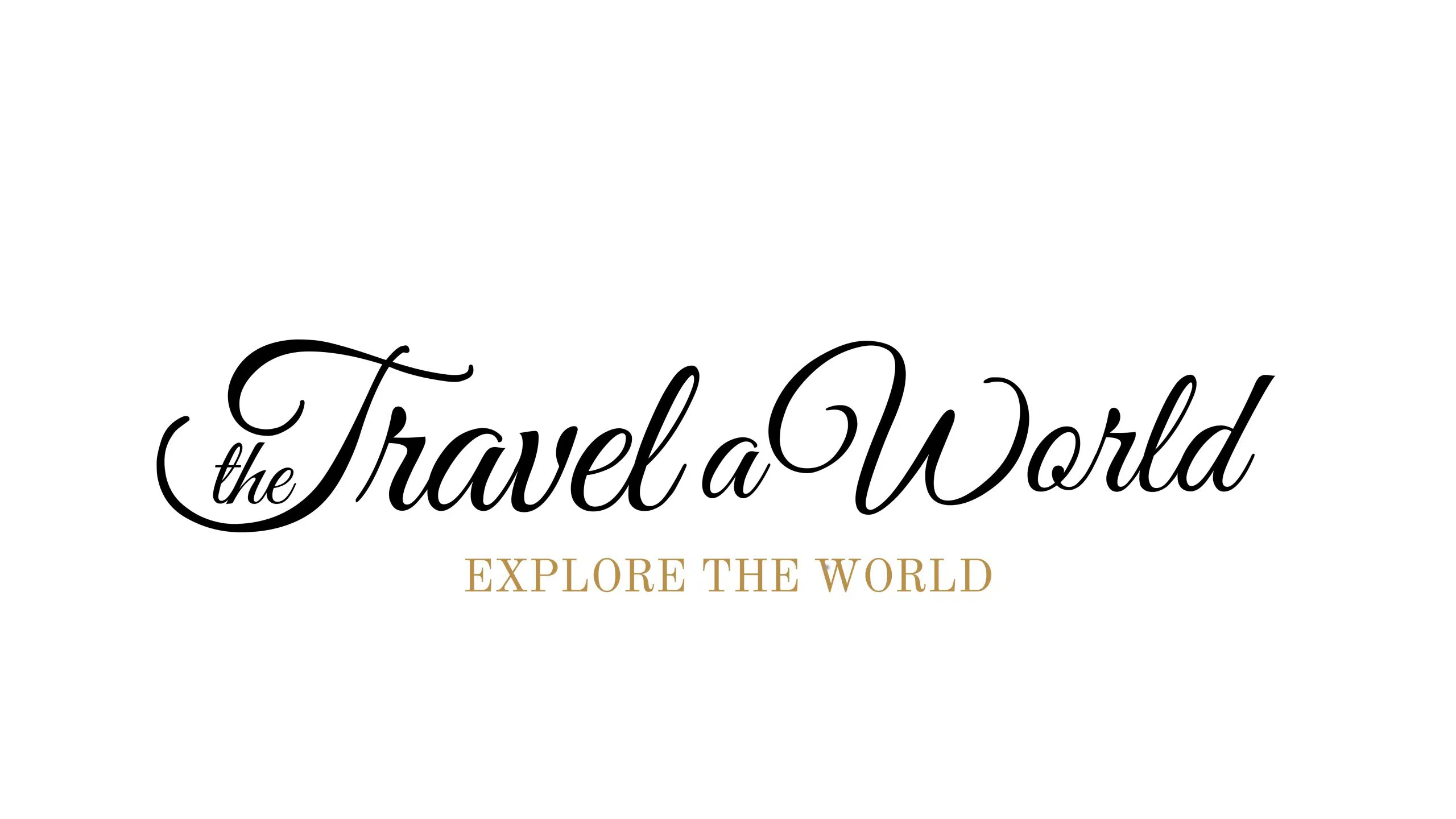
america tourist guide Embark on an unforgettable journey through the United States with “Exploring the United States: A Comprehensive Guide to Travel, Tourism, and Cultural Adventures.” This comprehensive guide is your passport to discovering the diverse landscapes, iconic attractions, and rich cultural experiences that define this vast and fascinating country.
Discover the towering skyscrapers of New York City, the serene beaches of Hawaii, the rugged mountains of the Rockies, and the sprawling plains of the Midwest. From the majestic Grand Canyon to the captivating Statue of Liberty, explore the country’s top tourist attractions that draw millions of visitors each year.
Table of Contents
A. Overview of the United States
The United States of America, often simply referred to as the United States or the U.S., is a vast and diverse country located in North America. It is the world’s third-largest country by total area and boasts a population of over 330 million people. The U.S. is renowned for its cultural, geographical, and ethnic diversity, making it a fascinating destination for travelers from around the globe.
Geographically, the United States spans a wide range of landscapes, from the towering skyscrapers of New York City to the serene beaches of Hawaii, from the rugged mountains of the Rockies to the sprawling plains of the Midwest. Its diverse geography offers an array of natural wonders, including the Grand Canyon, Yellowstone National Park, and the Everglades, attracting nature enthusiasts and adventurers alike.
Culturally, the United States is a melting pot of influences from around the world. It is home to a rich tapestry of traditions, languages, and cuisines brought by immigrants from every corner of the globe. From the jazz clubs of New Orleans to the tech hubs of Silicon Valley, the United States is a dynamic and vibrant country where innovation and creativity thrive.
B. Importance of Tourism in America
Tourism plays a vital role in the American economy, contributing significantly to job creation, economic growth, and cultural exchange. With its diverse attractions and world-renowned destinations, the United States welcomes millions of visitors each year, both domestic and international.
The tourism industry supports millions of jobs across various sectors, including hospitality, transportation, entertainment, and retail. From hotel staff and tour guides to restaurant workers and taxi drivers, tourism provides employment opportunities for individuals across the country, stimulating local economies and driving economic development.
Moreover, tourism promotes cultural exchange and understanding by bringing people from different backgrounds and cultures together. Visitors to the United States have the opportunity to experience its rich cultural heritage, interact with its diverse population, and gain a deeper appreciation for its history and traditions.
Visa and Documentation

Visa and Documentation” is a crucial section of “Exploring the United States: A Comprehensive Guide to Travel, Tourism, and Cultural Adventures.” This segment serves as an essential resource for travelers planning their visit to the United States, offering valuable insights into visa requirements, ESTA authorization, passport validity, and other necessary documentation.
Travelers will find detailed information on the various types of visas available, including tourist visas, business visas, student visas, and work visas, depending on their nationality and purpose of visit. The guide outlines the steps to determine the appropriate visa category and fulfill the necessary requirements before applying, ensuring a smooth and hassle-free process.
A. Visa Requirements
Travelers to the United States must meet certain visa requirements depending on their nationality and the purpose of their visit. The U.S. offers various types of visas, including tourist visas (B-2 visa), business visas (B-1 visa), student visas (F visa), and work visas (H visa), among others. It is essential to determine the appropriate visa category and fulfill the necessary requirements before applying.
B. ESTA for Visa Waiver Program countries
For citizens of countries participating in the Visa Waiver Program (VWP), an Electronic System for Travel Authorization (ESTA) is required for entry into the United States for tourism, business, or transit purposes. The ESTA allows eligible travelers to visit the U.S. for up to 90 days without obtaining a visa. However, travelers must apply for ESTA authorization online at least 72 hours before their departure to the United States.
C. Passport Validity
It is important for travelers to ensure that their passports meet the validity requirements for entry into the United States. Generally, passports must be valid for at least six months beyond the intended period of stay in the U.S. However, passport validity requirements may vary depending on the traveler’s nationality and visa type. It is advisable to check the specific passport requirements and validity period before traveling to the United States.
Understanding the visa requirements, obtaining ESTA authorization (if applicable), and ensuring passport validity are essential steps for travelers planning to visit the United States.
Health and Safety
Health and Safety” is a pivotal section within “Exploring the United States: A Comprehensive Guide to Travel, Tourism, and Cultural Adventures.” This segment offers essential information and tips to ensure the well-being and safety of travelers during their visit to the United States.
The guide provides valuable insights into the importance of obtaining travel insurance when visiting the U.S. Travelers will learn about the benefits of travel insurance, including coverage for medical emergencies, trip cancellations, lost luggage, and other unforeseen circumstances. With the potential for expensive medical care in the U.S., having travel insurance offers peace of mind and financial protection.
A. Travel Insurance
Travel insurance is essential when visiting the United States. It provides coverage for medical emergencies, trip cancellations, lost luggage, and other unforeseen events. Medical care in the U.S. can be expensive, so having travel insurance can help protect against financial losses due to unexpected circumstances.
B. Emergency Services
In case of emergencies, dial 911 for immediate assistance. The United States has a well-developed emergency response system, including police, fire, and medical services. It is important to familiarize yourself with the emergency contact numbers and procedures in the area you are visiting.
C. Vaccinations
Before traveling to the United States, it is recommended to check if any vaccinations are required or recommended for your destination. The Centers for Disease Control and Prevention (CDC) provides information on vaccinations and health recommendations for travelers to the U.S. It is advisable to consult with a healthcare provider or travel medicine specialist to ensure you are up to date on necessary vaccinations before your trip.
Transportation
Transportation” is a crucial section of “Exploring the United States: A Comprehensive Guide to Travel, Tourism, and Cultural Adventures,” providing travelers with valuable insights into navigating the diverse transportation options available in the country.
The guide offers comprehensive information on air travel within the United States, highlighting its vast network of airports serving both domestic and international flights. Major cities are equipped with international airports, ensuring convenient access to various destinations across the country. Travelers are advised to book flights in advance to secure favorable deals and ensure availability, especially during peak travel seasons.
A. Air Travel
The United States has a vast network of airports, making air travel a convenient option for domestic and international travelers. Major cities are served by international airports, with numerous airlines offering flights to and from various destinations. It is advisable to book flights in advance to secure the best deals and ensure availability, especially during peak travel seasons.
B. Public Transportation
Public transportation options vary depending on the city and region. Major cities like New York City, Chicago, and San Francisco have extensive public transportation systems, including buses, subways, and commuter trains. In other areas, public transportation may be limited, and renting a car or using rideshare services may be more practical.
C. Driving in the U.S.
Driving in the United States is a popular way to explore the country, especially in rural areas or areas with limited public transportation. To drive in the U.S., you must have a valid driver’s license and comply with local traffic laws. Speed limits, road signs, and driving regulations may vary from state to state, so it is essential to familiarize yourself with the rules of the road before embarking on a road trip. Additionally, renting a car is a common option for travelers, and rental agencies can be found at airports and major cities throughout the country.
Accommodation
Accommodation section of “Exploring the United States: A Comprehensive Guide to Travel, Tourism, and Cultural Adventures” provides travelers with valuable insights into the wide array of lodging options available throughout the country.
From luxurious hotels and resorts to budget-friendly motels and hostels, the United States offers a diverse range of accommodations to suit every taste, budget, and preference. Whether travelers seek a relaxing retreat in the mountains, a stylish boutique hotel in the city, or a cozy cabin by the beach, there is an ideal lodging option awaiting them.
The guide emphasizes the importance of considering the location of accommodations in relation to attractions, public transportation, and amenities. Opting for a centrally located hotel or rental property can save travelers time and money on transportation costs, ensuring convenient access to nearby sights and activities.
A. Types of Accommodation
The United States offers a wide range of accommodation options to suit every budget and preference. From luxury hotels and resorts to budget-friendly motels and hostels, travelers can choose from a variety of lodging options. Other popular accommodation choices include vacation rentals, bed and breakfasts, and campgrounds. Whether you prefer a cozy cabin in the mountains or a stylish boutique hotel in the city, there is something for everyone in the U.S.
B. Booking Options
Booking accommodation in the United States is easy, thanks to the numerous online booking platforms and travel websites available. Popular booking sites such as Booking.com, Expedia, and Airbnb offer a wide selection of accommodation options at competitive prices. It is advisable to book your accommodation in advance, especially during peak travel seasons, to secure the best rates and availability. Additionally, many hotels and rental properties offer discounts for early bookings or extended stays, so it pays to plan ahead.
C. Accommodation Tips
When booking accommodation in the United States, there are a few tips to keep in mind to ensure a comfortable and enjoyable stay. First, consider the location of your accommodation and its proximity to attractions, public transportation, and amenities. Choosing a centrally located hotel or rental property can save you time and money on transportation costs.
Second, read reviews from previous guests to get an idea of the quality and service offered by the accommodation. Websites like TripAdvisor and Yelp provide valuable insights from real travelers, helping you make an informed decision.
Finally, be aware of any additional fees or charges that may apply, such as resort fees, parking fees, or taxes. These extra costs can add up, so it is important to factor them into your budget when booking accommodation in the United States.
Money Matters
Money Matters” section of “Exploring the United States: A Comprehensive Guide to Travel, Tourism, and Cultural Adventures” provides essential information and tips regarding currency, payment options, and tipping customs for travelers visiting the country.
Firstly, the guide explains that the official currency of the United States is the United States Dollar (USD), denoted by the symbol “$”. It emphasizes that the U.S. dollar is widely accepted throughout the country, and travelers can easily exchange currency at airports, banks, and major hotels. Travelers are advised to carry some cash in USD for small purchases and emergencies, as well as a credit or debit card for larger transactions.
A. Currency
The official currency of the United States is the United States Dollar (USD), often denoted by the symbol “$”. The U.S. dollar is widely accepted throughout the country, and currency exchange services are available at airports, banks, and major hotels. It is advisable to carry some cash in USD for small purchases and emergencies, as well as a credit or debit card for larger transactions.
B. Payment Options
In addition to cash, credit and debit cards are widely accepted in the United States. Major credit cards such as Visa, MasterCard, American Express, and Discover are accepted at most establishments, including hotels, restaurants, and shops. It is advisable to inform your bank of your travel plans to avoid any issues with card transactions while abroad. Additionally, mobile payment options such as Apple Pay and Google Pay are becoming increasingly popular in the U.S., offering a convenient and secure way to make payments.
C. Tipping Culture
Tipping is a common practice in the United States, and it is customary to tip service providers such as waitstaff, bartenders, taxi drivers, and hotel staff. The standard tipping rate is typically 15-20% of the total bill, although this may vary depending on the level of service provided. It is important to check your bill for any included gratuity before adding an additional tip. Additionally, it is customary to tip hotel housekeeping staff and tour guides, usually around $1-2 per day and $5-10 per day, respectively.
Communication
“Communication” section of “Exploring the United States: A Comprehensive Guide to Travel, Tourism, and Cultural Adventures” serves as a valuable resource for travelers, offering insights into language, connectivity options, and useful phrases to facilitate communication during their visit to the country.
To begin with, the guide highlights that the official language of the United States is English, making it the most widely spoken language across the nation. While English proficiency is prevalent among the majority of the population, the section acknowledges the diverse linguistic landscape, especially in areas with substantial immigrant communities. Travelers are encouraged to learn some basic English phrases to aid communication, although many Americans are accustomed to interacting with individuals who speak languages other than English and may be able to assist.
A. Language
The official language of the United States is English, and it is the most widely spoken language in the country. While English is spoken and understood by the majority of the population, there are also many other languages spoken, especially in areas with large immigrant populations. It is always helpful to learn some basic English phrases to facilitate communication, although many Americans are accustomed to interacting with non-English speakers and may be able to assist you.
B. Connectivity
The United States has a well-developed telecommunications infrastructure, and access to mobile phone networks and the internet is widespread. Most major cities and tourist destinations offer reliable cellular coverage and high-speed internet access. Many hotels, restaurants, and cafes also provide free Wi-Fi for guests. If you are traveling from abroad, it is advisable to check with your mobile service provider about international roaming options or purchase a local SIM card for your phone.
C. Useful Phrases
While English is the predominant language in the United States, knowing a few useful phrases can be helpful, especially when traveling to more remote areas or interacting with locals. Here are some basic phrases to get you started:
Hello: Hi/Hello Goodbye: Goodbye/Bye Thank you: Thank you Please: Please Excuse me: Excuse me Where is the bathroom?: Where is the restroom? How much does this cost?: How much is this? I don’t understand: I don’t understand Can you help me?: Can you help me?
Sightseeing and Activities

Sightseeing and Activities section of Exploring the United States: A Comprehensive Guide to Travel, Tourism, and Cultural Adventures” serves as an exciting roadmap for travelers, offering a glimpse into the diverse range of attractions and experiences awaiting them across the country.
Firstly, the guide highlights the plethora of iconic tourist attractions that draw millions of visitors to the United States each year. From the historic Statue of Liberty in New York City to the majestic Golden Gate Bridge in San Francisco, the country boasts a treasure trove of renowned landmarks. Other must-visit destinations include the awe-inspiring Grand Canyon in Arizona, the enchanting Disneyland Resort in California, and the Smithsonian museums in Washington, D.C. Whether travelers are history buffs, nature enthusiasts, or seeking entertainment, the United States offers a myriad of sights and experiences to cater to every interest.
A. Top Tourist Attractions
The United States is home to a wealth of iconic tourist attractions that draw millions of visitors each year. From the Statue of Liberty in New York City to the Golden Gate Bridge in San Francisco, the country offers a diverse range of sights and experiences. Other must-visit attractions include the Grand Canyon in Arizona, Disneyland Resort in California, and the Smithsonian museums in Washington, D.C. Whether you’re interested in history, nature, or entertainment, there’s something for everyone to enjoy in the United States.
B. Outdoor Adventures
For nature lovers and outdoor enthusiasts, the United States offers a wide array of outdoor adventures. National parks such as Yellowstone, Yosemite, and Grand Teton are renowned for their stunning landscapes and diverse wildlife. Outdoor activities such as hiking, camping, fishing, and wildlife watching are popular ways to explore the natural beauty of the country. Whether you’re exploring the rugged mountains of Colorado or the pristine beaches of Hawaii, the United States offers endless opportunities for outdoor adventure.
C. Cultural Experiences
The United States is a melting pot of cultures, and there are many opportunities to experience its rich cultural heritage. From vibrant cities like New York City and Chicago to charming towns like Santa Fe and Charleston, the country is home to a diverse range of cultural attractions. Visitors can explore art galleries, museums, and theaters, or attend music festivals, cultural events, and culinary festivals to immerse themselves in the local culture. Whether you’re interested in history, art, music, or cuisine, the United States offers a wealth of cultural experiences to enjoy.
Shopping and Dining

Sightseeing and Activities section of Exploring the United States: A Comprehensive Guide to Travel, Tourism, and Cultural Adventures” serves as an exciting roadmap for travelers, offering a glimpse into the diverse range of attractions and experiences awaiting them across the country.
Firstly, the guide highlights the plethora of iconic tourist attractions that draw millions of visitors to the United States each year. From the historic Statue of Liberty in New York City to the majestic Golden Gate Bridge in San Francisco, the country boasts a treasure trove of renowned landmarks. Other must-visit destinations include the awe-inspiring Grand Canyon in Arizona, the enchanting Disneyland Resort in California, and the Smithsonian museums in Washington, D.C. Whether travelers are history buffs, nature enthusiasts, or seeking entertainment, the United States offers a myriad of sights and experiences to cater to every interest.
A. Popular Shopping Destinations
The United States is a shopper’s paradise, with a wide range of shopping destinations to suit every taste and budget. From luxury boutiques and department stores to outlet malls and flea markets, the country offers a diverse array of shopping experiences. Popular shopping destinations include Fifth Avenue in New York City, Rodeo Drive in Beverly Hills, and the Magnificent Mile in Chicago. Whether you’re looking for designer fashions, unique souvenirs, or bargain deals, you’ll find it all in the United States.
B. Local Cuisine
The United States boasts a rich culinary heritage, with each region offering its own unique flavors and specialties. From Southern barbecue and Tex-Mex cuisine to New England seafood and Hawaiian poke, there’s a wide variety of local dishes to sample. Food trucks, diners, and fine dining restaurants all offer opportunities to experience the diverse flavors of American cuisine. Don’t forget to try regional specialties like clam chowder in Boston, deep-dish pizza in Chicago, or beignets in New Orleans for a taste of local flavor.
C. Dining Etiquette
When dining out in the United States, it’s important to be aware of dining etiquette customs. Tipping is customary in restaurants, typically around 15-20% of the total bill. It’s also polite to wait to be seated at a restaurant rather than seating yourself. When ordering, be clear and specific about your preferences, and don’t be afraid to ask questions about the menu. In more formal dining settings, it’s customary to place your napkin on your lap and to wait until everyone at the table has been served before beginning your meal.
| Section | Description |
| Overview of the United States | A detailed introduction to the United States, covering its geographical, cultural, and ethnic diversity. It provides insights into the country’s landscapes, attractions, and population, offering a comprehensive overview for travelers. |
| Importance of Tourism in America | Explores the significance of tourism in the American economy, highlighting its contributions to job creation, economic growth, and cultural exchange. Discusses how tourism stimulates local economies across various sectors. |
| Visa and Documentation | Essential information for travelers regarding visa requirements, ESTA authorization, passport validity, and other necessary documentation for visiting the United States. Guides travelers on the steps to obtain the appropriate visas and fulfill requirements. |
| Health and Safety | Provides crucial information and tips on ensuring the well-being and safety of travelers during their visit to the United States. Includes details on travel insurance, emergency services, vaccinations, and general health considerations. |
| Transportation | Offers insights into navigating the diverse transportation options available in the United States. Covers air travel, public transportation, and driving in the U.S., providing guidance on booking flights, using public transit, and understanding driving regulations. |
| Accommodation | Details the wide array of lodging options available throughout the country, from luxurious hotels to budget-friendly motels and vacation rentals. Includes information on types of accommodations, booking options, and tips for choosing the right lodging. |
| Money Matters | Provides essential information on currency, payment options, and tipping customs for travelers visiting the United States. Discusses the U.S. dollar, payment methods, and customary tipping practices to help travelers manage their finances during their trip. |
| Communication | Offers insights into language, connectivity options, and useful phrases to facilitate communication during travelers’ visits to the United States. Covers the predominant use of English, telecommunications infrastructure, and basic phrases for interaction. |
| Sightseeing and Activities | Serves as a roadmap for travelers, highlighting iconic tourist attractions, outdoor adventures, and cultural experiences across the United States. Discusses top attractions, national parks, cultural events, and activities to cater to diverse interests. |
| Shopping and Dining | Explores the shopping and culinary experiences available throughout the country. Covers popular shopping destinations, local cuisine specialties, and dining etiquette customs to help travelers navigate retail therapy and enjoy the diverse flavors of American cuisine. |
Exploring the United States: A Comprehensive Guide to Travel, Tourism, and Cultural Adventures” offers a captivating journey through the diverse landscapes, iconic attractions, and rich cultural experiences that define this vast and fascinating country. From the towering skyscrapers of New York City to the serene beaches of Hawaii, the rugged mountains of the Rockies to the sprawling plains of the Midwest, the United States beckons travelers with a myriad of sights and adventures.
FAQ (Frequently Asked Questions)
Q: What are the visa requirements for traveling to the United States? A: Travelers to the United States must meet specific visa requirements based on their nationality and the purpose of their visit. The U.S. offers various types of visas, including tourist visas (B-2 visa), business visas (B-1 visa), student visas (F visa), and work visas (H visa). It is essential to determine the appropriate visa category and fulfill the necessary requirements before applying. Citizens of countries participating in the Visa Waiver Program (VWP) can apply for Electronic System for Travel Authorization (ESTA) for visits up to 90 days.
Q: What health and safety tips should I keep in mind when visiting the United States? A: Travelers are advised to obtain travel insurance for coverage of medical emergencies, trip cancellations, and lost luggage. In case of emergencies, dial 911 for immediate assistance, as the United States has a well-developed emergency response system. It is also recommended to check if any vaccinations are required or recommended for your destination before traveling.
Q: What are the transportation options available in the United States? A: The United States has a vast network of airports, making air travel a convenient option for domestic and international travelers. Major cities are served by international airports, with numerous airlines offering flights to various destinations. Public transportation options vary by city, with extensive systems in major cities like New York City, Chicago, and San Francisco. Renting a car is also a popular choice for exploring rural areas.
Q: What types of accommodation can I expect in the United States? A: The United States offers a wide range of accommodations, including luxurious hotels, budget-friendly motels, vacation rentals, bed and breakfasts, and campgrounds. Travelers can choose accommodations based on their budget, preferences, and proximity to attractions. It is advisable to book accommodations in advance, especially during peak travel seasons.
Q: How should I handle money matters while traveling in the United States? A: The official currency of the United States is the United States Dollar (USD), widely accepted throughout the country. Travelers can exchange currency at airports, banks, and major hotels. Credit and debit cards are widely accepted, and mobile payment options are becoming increasingly popular. Tipping is customary in the United States, typically around 15-20% of the total bill in restaurants.
Q: What language is spoken in the United States, and how can I communicate effectively? A: The official language of the United States is English, although there are many other languages spoken, especially in areas with large immigrant populations. Knowing some basic English phrases can be helpful, but many Americans are accustomed to interacting with non-English speakers. The country also has a well-developed telecommunications infrastructure, offering widespread access to mobile phone networks and the internet.
Q: What are some top tourist attractions and activities to experience in the United States? A: The United States boasts a wealth of iconic tourist attractions, including the Statue of Liberty, the Grand Canyon, Disneyland Resort, and the Smithsonian museums. Outdoor enthusiasts can explore stunning national parks like Yellowstone and Yosemite, while cultural enthusiasts can immerse themselves in vibrant cities like New York City and Chicago. The country offers a diverse range of experiences, from historic landmarks to outdoor adventures and cultural festivals

